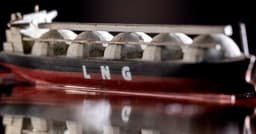Home / Environment / WWII Wreckage Becomes Marine Oasis Off German Coast
WWII Wreckage Becomes Marine Oasis Off German Coast
20 Nov
Summary
- Thousands of sea creatures inhabit a German munitions dump site.
- The munitions site hosts a more populous ecosystem than surrounding areas.
- Munitions act as artificial reefs, supporting declining marine species.

Beneath the waves of the Bay of Lübeck, Germany, a surprising underwater metropolis has emerged from the remnants of World War II. Thousands of Nazi bombs, torpedoes, and mines, dumped at the war's end, now host a thriving ecosystem, astonishing researchers who expected a toxic wasteland. Instead, scientists discovered a vibrant marine habitat teeming with starfish, fish, crabs, and mussels, exceeding the biodiversity of the adjacent seafloor.
This unexpected bloom of life underscores nature's resilience and its ability to adapt to human-made devastation. The decaying munitions have effectively become artificial reefs, providing essential hard surfaces in an area where natural rocky outcrops were previously removed for construction. This phenomenon highlights how human debris can serve as crucial habitats for marine life, especially as oceans face increasing pressure from fishing and trawling.
As Germany begins removing these hazardous relics, scientists advocate for replacing them with safer artificial structures to preserve the established ecosystems. The Bay of Lübeck's munitions sites, like other submerged shipwrecks and oil rigs globally, have inadvertently become sanctuaries for marine species, including the declining Baltic cod. This discovery offers a novel perspective on repurposing dangerous underwater debris and protecting marine biodiversity.




